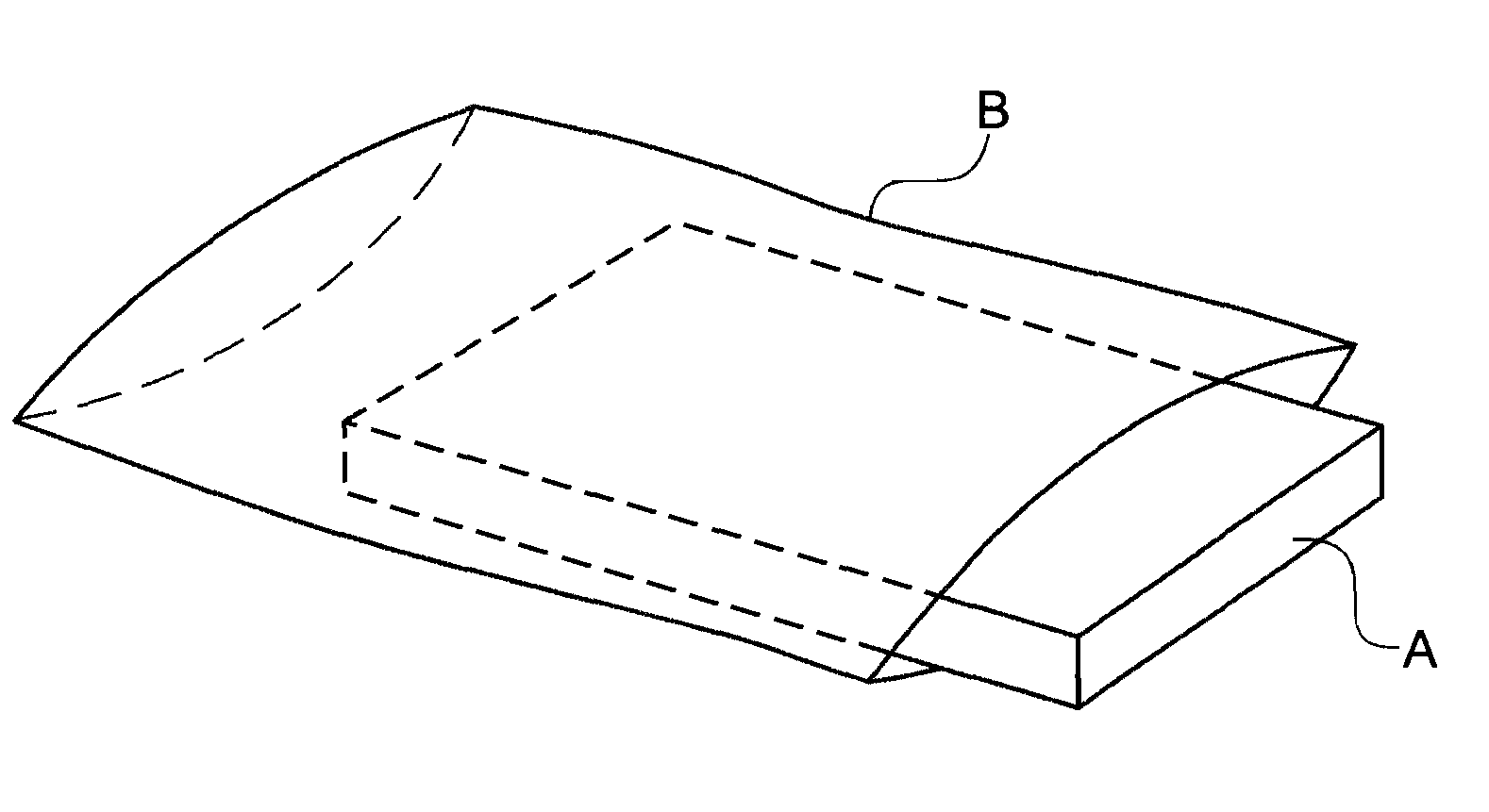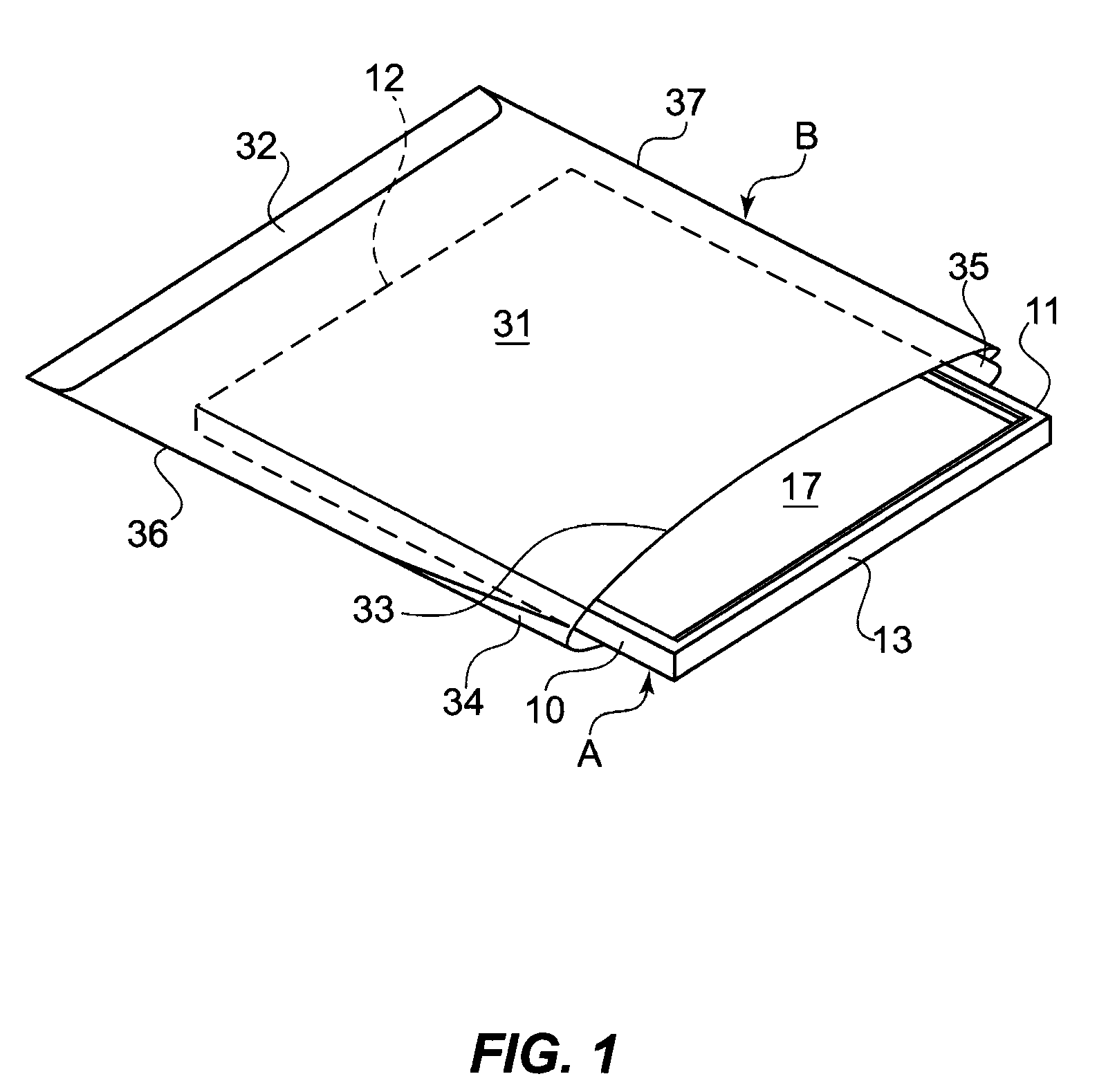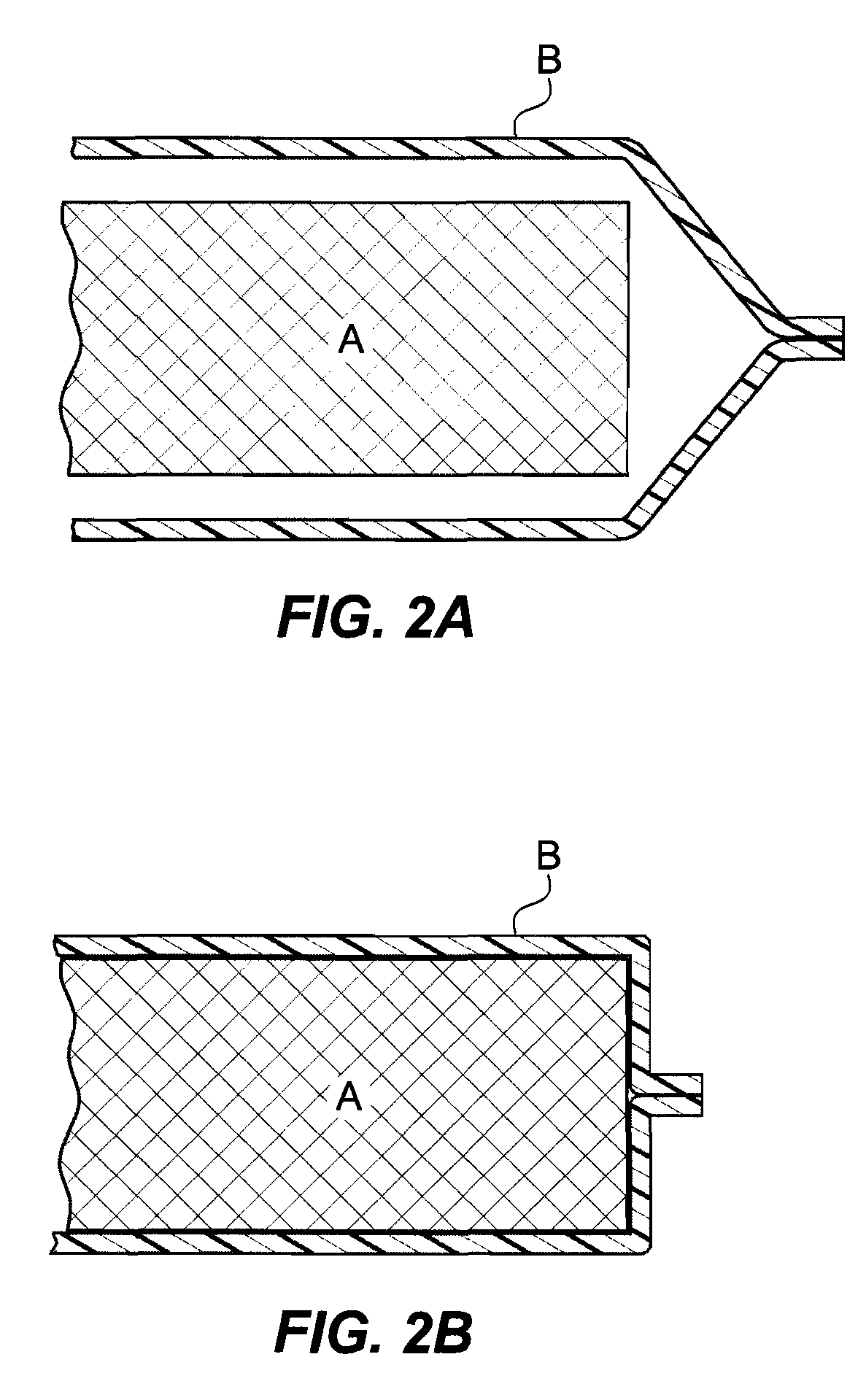Heat-shrinkable anti-fomitic device
a heat-shrinkable, anti-fomitic technology, applied in the direction of flexible container closure, container preventing decay, application, etc., can solve the problems of infected by reverse wicking, particularly problematic, and compromised immune systems
- Summary
- Abstract
- Description
- Claims
- Application Information
AI Technical Summary
Problems solved by technology
Method used
Image
Examples
Embodiment Construction
[0026]Disclosed embodiments relate generally to a cover or barrier formed of shrink film to prevent cross-infection. In particular, the embodiments relate to a range of anti-fomitic covers to prevent cross-infection, including such covers for pillows, mattresses, X-ray cassettes, surgical and diagnostic equipment, toilet seats, table and chair seat surfaces, wash basin faucet handles and other handles, etc.
[0027]In the following detailed descriptions, a flat object to be covered will be designated generally as A, and the cover therefor will be designated generally as B. In general, however, object A need not be flat. A may represent any object that may be covered and that may come into contact with human skin or clothing, or A may be a body part (for example, a part covered by a diaper).
[0028]The cover B may be made of any disposable heat-shrinkable film material that is transparent to X-rays (where applicable), that is suitable for contact with human skin, and that also serves as a...
PUM
| Property | Measurement | Unit |
|---|---|---|
| heat-shrinkable | aaaaa | aaaaa |
| heat-shrink | aaaaa | aaaaa |
| heat-shrink | aaaaa | aaaaa |
Abstract
Description
Claims
Application Information
 Login to View More
Login to View More - R&D
- Intellectual Property
- Life Sciences
- Materials
- Tech Scout
- Unparalleled Data Quality
- Higher Quality Content
- 60% Fewer Hallucinations
Browse by: Latest US Patents, China's latest patents, Technical Efficacy Thesaurus, Application Domain, Technology Topic, Popular Technical Reports.
© 2025 PatSnap. All rights reserved.Legal|Privacy policy|Modern Slavery Act Transparency Statement|Sitemap|About US| Contact US: help@patsnap.com



